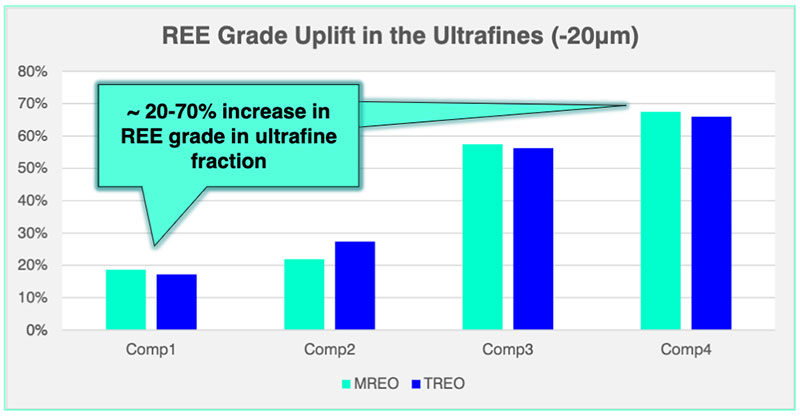Voltaic welcomes positive metallurgical REE clay results from Paddy’s Well

Step two of the metallurgical testing is now underway to characterise the REE species present. Pic via Getty Images.
Voltaic Strategic Resources has reported encouraging results from step one beneficiation tests from the Neo prospect, part of its Paddy’s Well Rare Earth Elements (REE) project.
The tests showed REE enriched clays at Neo are highly amenable to upstream beneficiation.
By selectively removing coarse (large) particles from the Neo clay samples, several significant benefits were demonstrated including a ‘significant’ boost in REE grades – up to 67% increase in valuable MREO and 66% in TREO.
It also resulted in a reduction of waste (gangue) which the company says implies likely reduced reagent consumption and equipment requirements for a full-scale REE process plant.
Step towards proving economic viability at Neo
Voltaic Strategic Resources (ASX:VSR) VEO Michael Walshe said the ‘size by assay’ analysis work has demonstrated that the majority of REEs within the clay system at Neo are hosted in the ultrafine (<20μm) size fraction and are highly amenable to upstream beneficiation.
“This presents Voltaic with an opportunity to significantly upgrade REE grade, reduce the quantity of material processed, reduce deleterious elements, and substantially decrease reagent consumption and equipment requirements for full-scale operation,” he said.
“Up to 94% of the valuable magnetic (Nd, Pr, Dy, Tb) REE mass can be recovered in the -20μm size fraction (particles <20μm), whilst removing ~40% of the total mass as waste.
“This represents a major step forward in proving the economic viability of a REE project at Neo.
“We are eagerly awaiting step two leaching testwork results, which we should have in approximately four weeks.”
No further clay-focused drilling is planned until the leaching results are known and concurrently, exploration continues focusing on the company’s several primary carbonatite REE and niobium targets within Paddy’s Well.

Ionic adsorption deposit potential is key
Favourable ionic adsorption deposit (IAD) test results are critical to the economic viability of REE clay deposits.
If very low pH (highly acidic) conditions are required, then the material will likely contain more refractory forms of REEs as opposed to ionically adsorbed species, and unwanted impurity elements such as Al and Fe may also solubilise.
And at Neo, the alumina-rich, low iron kaolinitic clay confirmed Al2O3 grades up to 36% (by mass) and very high Al2O3/Fe2O3 ratio – which is favourable for IAD potential.
Low CaO content within clay (maximum 0.4% by mass) is also potentially favourable for reduced acid consumption during leaching stage and previously identified halloysite is also favourable for IAD.
Step two of the metallurgical testing is now underway to characterise the REE species present.
This article was developed in collaboration with Voltaic Strategic Resources Limited, a Stockhead advertiser at the time of publishing.
This article does not constitute financial product advice. You should consider obtaining independent advice before making any financial decisions.
Related Topics

UNLOCK INSIGHTS
Discover the untold stories of emerging ASX stocks.
Daily news and expert analysis, it's free to subscribe.
By proceeding, you confirm you understand that we handle personal information in accordance with our Privacy Policy.








